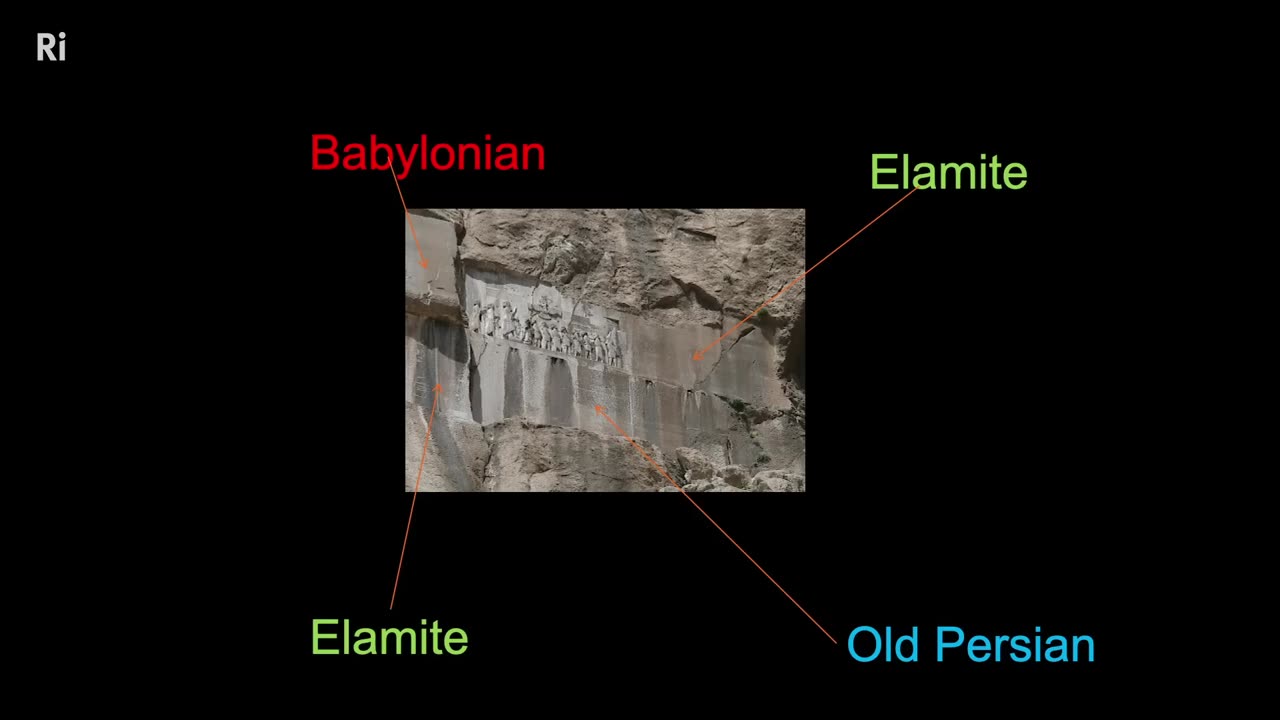Premium Only Content

How Writing Developed - Cuniform and more with Irving Finkel
Have you ever wondered how writing developed?
Irving Finkel, an excellent lecturer who often uses
humour to drive home a point. Includes reference to
the trilingual inscription of Darius the Persian at Behiston.
The Behiston monument also figures prominently in the Lost
Tribes narrative and the hidden true history of the White Christian
peoples. Connecting Dots! 😊✨
#PeaceAndRespect
#GodBless
#BiblicalEarth
#FindTheCreator
+++++++
Source:
2,521,375 views Jul 24, 2019 THE ROYAL INSTITUTION
Writing is generally agreed to be among the greatest inventions in human history, perhaps the greatest invention, since it made history possible.
Subscribe for regular science videos: http://bit.ly/RiSubscRibe
You can read more about Irving's quest to explore the Noah's Ark myth in "The Ark Before Noah: Decoding the Story of the Flood": https://geni.us/zU95bVO
or learn more about cuneiform writing in "Cuneiform": https://geni.us/eMPb
Writing seems to have been invented in the late fourth millennium BC in Mesopotamia in the form of wedge-shaped marks pressed into soft clay with a reed stylus: the script known as cuneiform. Through his work on this ancient language, Irving Finkel, has uncovered amazing secrets from over five thousand years ago, including the story behind Noah’s ark.
Irving Finkel is the curator in charge of cuneiform inscriptions on tablets of clay from ancient Mesopotamia at the British Museum, of which the Middle East Department has the largest collection of any modern museum. This work involves reading and translating all sorts of inscriptions, sometimes working on ancient archives to identify manuscripts that belong together, or even join to one another. He is the author of The Ark Before Noah: Decoding the Story of the Flood.
This talk was filmed in the Ri on 18 January 2019.
-
 1:16:31
1:16:31
Omar Elattar
9 months agoThe Untold Story: How Vans Became a $3 Billion Dollar Shoe Empire In 75 mins
19.9K8 -
 LIVE
LIVE
LethalPnda
2 hours agoLocked & Loaded! 🔥 Fate Trigger Beta #RazerCreator #SpacePanda @Mystivis
86 watching -
 LIVE
LIVE
BigDaddySlick78's Live Gaming Channel
2 hours ago💰I Pay You To Play Call of Duty Warzone Rebirth Island LIVE #callofduty #warzone #cod #gaming
28 watching -
 1:59:43
1:59:43
Side Scrollers Podcast
2 days agoRIP Hulk Hogan + Payment Processor CENSORSHIP Has Officially Begun + More | Side Scrollers
174K13 -
 LIVE
LIVE
Lofi Girl
2 years agoSynthwave Radio 🌌 - beats to chill/game to
295 watching -
 1:56:31
1:56:31
The Pascal Show
19 hours ago $6.35 earnedGHISLAINE FLIPS?! DOJ Receives SECRET LIST of 100 Epstein Associates!”
17.4K7 -
 10:17
10:17
Dr Disrespect
11 days agoIt's Time To Get Serious
186K31 -
 2:15:09
2:15:09
Badlands Media
1 day agoDevolution Power Hour Ep. 375: Obama’s Orders, Ukraine’s Collapse & the Inversion of Justice
309K121 -
 2:32:03
2:32:03
BlackDiamondGunsandGear
15 hours agoAFTER HOURS ARMORY w/ DLD & John from GOA & FLR
35.6K7 -
 1:05:28
1:05:28
Man in America
16 hours agoTREASON? Obama, Hillary, and Soros in the New World Order Agenda EXPOSED w/ Mel K
103K91